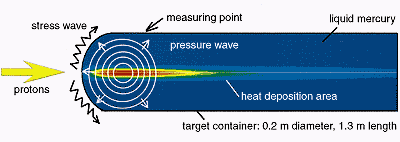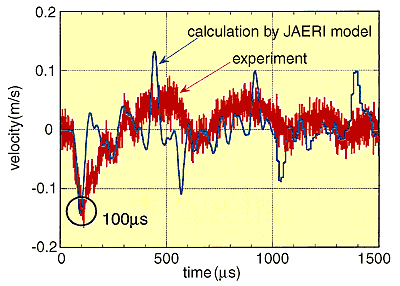 |
|||||
|
|||||
 |
|||||
|
|||||
| It has been very difficult to observe internal structure in ultra-low
temperature, high magnetic field or harsh radiation fields. Neutrons
will become one of the necessary probes for science because they
have a nature of high permeability and are not disturbed by magnetic
fields. New intense neutron sources are crucial to determine the
structure of protein and to evaluate internal residual stress
of innovative materials. The target is "a neutrons spring." A proton beam delivered from the accelerator enters the target material. Particles produced in the course of spallation reactions generate many neutrons and intense nuclear heat that may cause pressure waves in the target and stress waves in the target container. The question is, how large will the thermal shock be? In order to investigate spallation reactions, an international experiment has been carried out by using a high intensity proton beam at 24 GeV and of more than 1012 particles in the Alternating Gradient Synchrotron (AGS) at Brookhaven, USA. A laser probe using the Doppler effect successfully measured waves: the target container responded sharply at a time of 100 microseconds. The computational model proposed by JAERI could explain the behavior of waves and proved that the waves are produced by the thermal shock generated in the target. These findings will contribute very much to the construction of target. |
| Reference S. Ishikura et al., Transient Stress Waves in a Heavy Liquid-Metal System at High Intensity Proton-Accelerator, ICM & M'97, JSME Centennial Grand Congress, 89 (1997). |
| Select a topic in left column |
|
Persistent Quest-Research Activities 1998 Copyright(c)Japan Atomic Energy Research Institute |